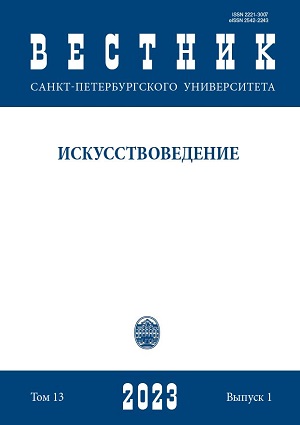Sources of Figurenlehren of the Baroque Era in Musicology of the German Language Space
DOI:
https://doi.org/10.21638/spbu15.2023.103Abstract
It is hardly possible to immediately give an exact answer to the question: what is the exact number of authors of musical-theoretical treatises containing catalogs of musical-rhetorical figures. But very often the “recognized” number (with a fairly stable set of theoretical sources) is considered to be fifteen authors. How did scholars of the German language space gradually discover catalogs of musical figures in treatises and include them in scientific circulation? Is it possible to consider the “recognized” list of works of fifteen Baroque authors exhaustive? Why is he firmly entrenched in musicology? Which of the musicologists wanted to expand the range of treatises and on what grounds? This article is devoted to finding answers to these questions. As a result of the analysis of dictionary and scientific articles, books and dissertations by such authors as C. J. A. Hoffmann (1830), C. Kossmaly (1846), H. Gehrmann (1891), А. Schering (1908), K. Ziebler (1933), H. Brandes (1935), H. H. Unger (1941), A. Schmitz (1955), H. H. Eggebrecht (1957), D. Bartel (1985, 1997), W. Braun (1994), H. Krones (1997), J. Klassen (2001) and others, the following conclusion was made: the researchers did not have a common opinion in the selection of sources and their belonging to the discourse about Figurenlehren. The heterogeneity of figure catalogs, the presence of Manieren, diminution and late Renaissance rules of counterpoint in them are the main reasons for the potential openness of the list of treatises involved in the doctrine of figures. To explain the reasons for the formation of the “recognized” list of authors (largely due to the English edition of D. Bartel’s book) and a certain inertia of musicology in different countries in the issue of Figurenlehren sources in the current century, the article uses the research of scientists — representatives of American, Bulgarian, English, Israeli, Italian, Mexican, Polish, Russian musicology.
Keywords:
musical rhetoric, musical-rhetorical figures, doctrine of musical figures, Figurenlehre, Baroque era, treatise, musical-theoretical source, musica poetica, musical historiography, German musicology
Downloads
References
Downloads
Published
How to Cite
Issue
Section
License
Articles of "Vestnik of Saint Petersburg University. Arts" are open access distributed under the terms of the License Agreement with Saint Petersburg State University, which permits to the authors unrestricted distribution and self-archiving free of charge.






